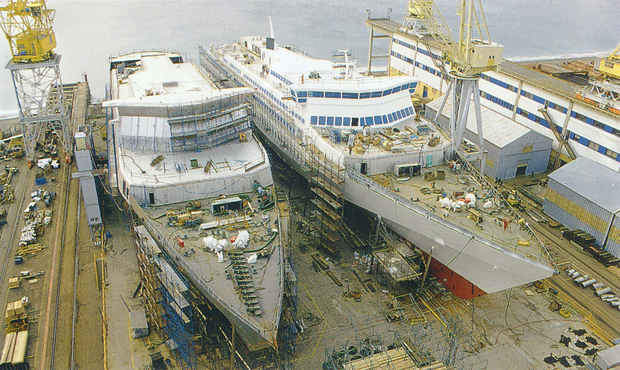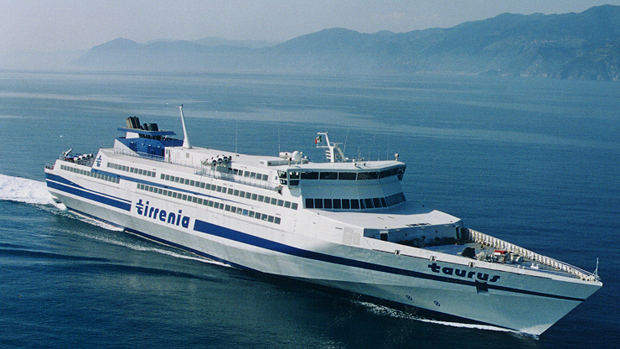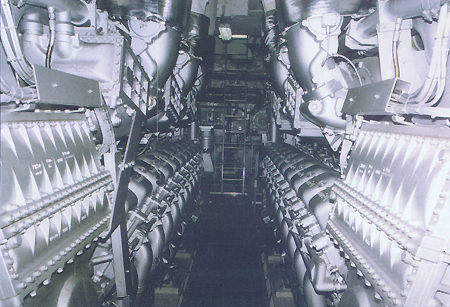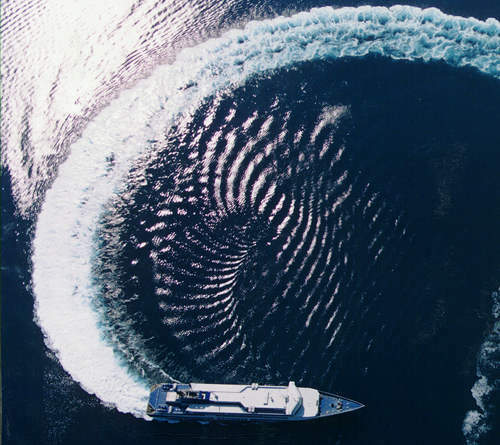The MDV 3000 Jupiter class Ro-Ro fast ferry Taurus was built at Fincantieri’s Riva Trigoso Shipyard in Genoa. With its identical sistership, Aries, Taurus is the first high-speed monohull ferry to have a deadweight exceeding 1,000t, making it the biggest fast ferry in the world.
Taurus and Aries entered service for Italian ferry operator Tirrenia in 1998 and carry out six daily crossings between Civitavecchia (Rome) and Olbia (Sardinia). This affords a daily transport capacity of 10,800 passengers and 2,760 vehicles. A second pair of fast ferries was delivered in May 1999 to be deployed on the Genoa to Porto Torres route.
Design
The ship is a monohull-type vessel. With some parts of the vessel subject to high local loads, a high-tensile steel material with a yield strength of 460N/mm² has been adopted, with the remaining superstructure of aluminium alloy.
In order to improve the good seaworthiness characteristics of this deep-V monohull, two pairs of active fin stabilisers have been installed.
These are a combination of composite and steel fins. The system, controlled by MDI software, has been designed to control roll (the most important motion for a ship of this dimension) and yaw (improving the course-keeping of the ship). As verified through extensive seakeeping tests at model basin, the pitch motion is very limited.
The ship is arranged on six decks. Three decks (the main passenger deck, the upper passenger deck and the panorama deck) are devoted to passenger transport, while the lower garage deck, main garage deck and upper garage deck (hoistable deck) are devoted to vehicles.
The gross tonnage of the ship is 11,374t.
.
Facilities
The ship has a transport capacity of 1,800 passengers with a total of 2000 seats, as well as accommodation for 550 club class passengers on the upper passenger deck. Passenger embarking/disembarking operation is carried out through the stern passenger ramp to the main garage deck and an escalator connects this deck to the main and upper passenger decks. Drivers reach passenger lounges through stairs and/or two 12-person capacity elevators. Passenger lounges are reached by means of reversible escalators and elevators, thus reducing boarding and alighting time. The vessel is designed to evacuate all people on-board in less than 15min.
The ship has a transport capacity of 460 cars. The three garage decks can be loaded simultaneously. In case of freight transportation, the ship transport capacity is 30 trucks, each weighing 30t, plus 100 cars (mainly on the lower garage deck).
For increased safety, the installation of bow doors has been obviated, with the loading and unloading of vehicles taking place through two stern doors, necessitating a complete U-turn of cars. The two stern door/ramps are designed to embark/disembark trucks of 45t (15t axle load). Modular hydraulic operated hoistable decks allow a clear height above the main garage deck of 4.4m.
Propulsion
Four diesel engines and two gas turbines supply the power of 95,000hp. The gas turbines are connected to the two booster waterjets, while the diesels are connected to the biggest steering water jets ever built. The four diesel engines are MTU 20V 1163 20V TB73 L units rated 6,500kW each and the two gas turbines are LM 2500 systems rated at 22,000kW each. The system includes two double inlet reduction gears (diesel shafts), two reduction gears (gas turbines), two booster waterjets (gas turbines) and two wing steering waterjets (diesel shafts). The high flexibility of the propulsion system allows the ship to have three operative speeds. The speed at contractual condition of 1,200t deadweight and service power (about 90% MCR) exceeded specified figure by over 1 knot.











